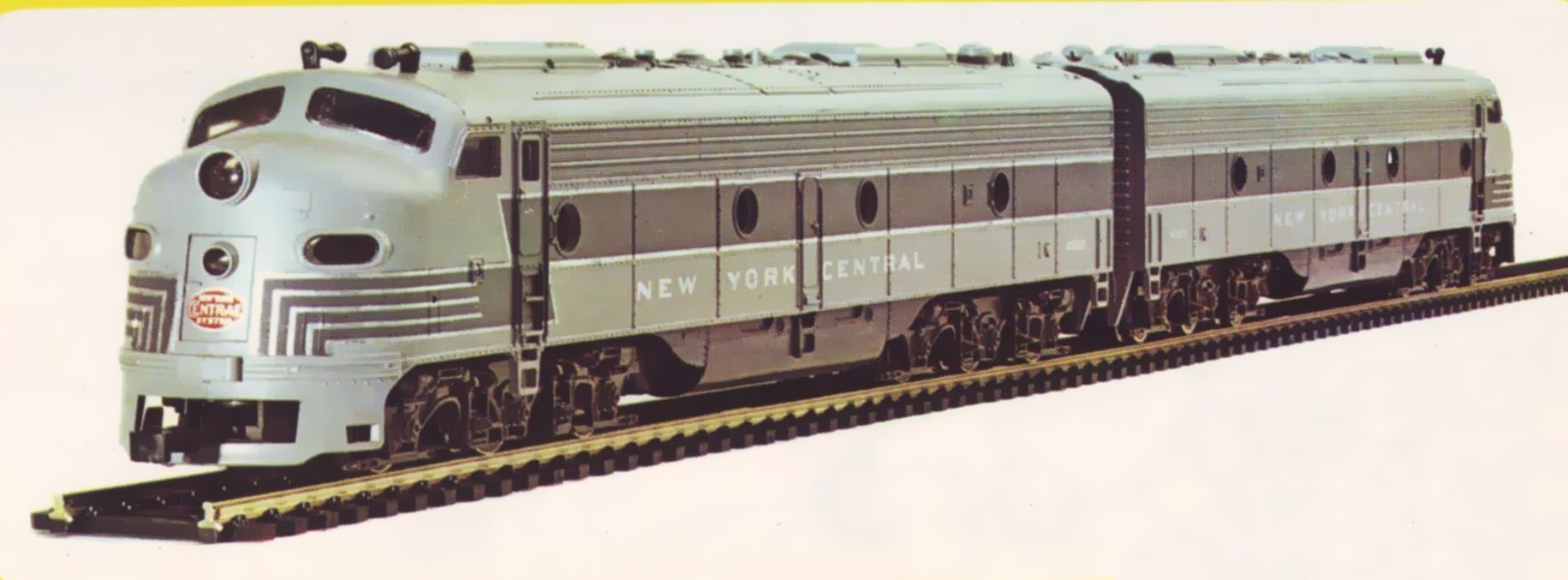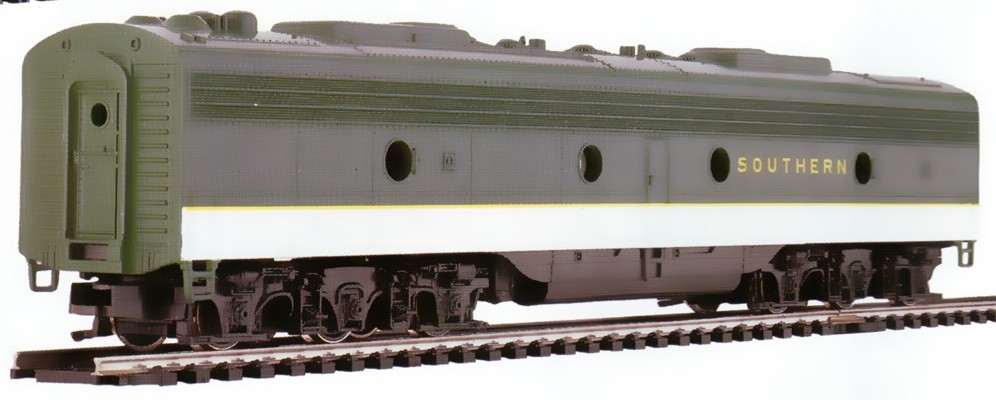

Diesel Locomotive EMD E-8
During the 35 year period roughly (referred to the 1980s) these “diesels” were present consistently on the American railroad scenario; thus determining the progressive elimination into the sunset of railroad history of the “puffing monsters” and « steel dinosaurs » which had well served for such a long time the demands of railroad transport. The first Diesel units, of various makes and shapes, were produced by different train builders: The EMD GM (Electro Motive Division of General Motors) was immediately in front line and technologically in advance for the production of locomotives for transport of passengers, a position they have always maintained throughout the years.
Other constructors like: Alco, Baldwin, Lima and Fairbanks Morse were competing for the rest of the market.
The intensive mass production was a good deal for the EMD and thanks to its growing success in sales, in a short period of time, gained enough to cover the initial investment. The most successful model built was the later E8 version, which engine could develop 2250 HP. Initially the EMD E8 were used mainly for passenger service, but after some time also for goods service.
Many were the Railroad companies, not only North American, which placed in service these units: The models below presented are of the most commonly known.

This model was sold as a single, and as double units ( Unit A with drivers cab and unit B without cab. See below.

Produced by Rivarossi from 1967 till 1991 in an incredible variety of liveries.
One curious detail the unit B were all produced in 1988.
The liveries available:: Northern Pacific, Chesapeake & Ohio, Illinois Central, Pennsylvania (red), Wabash, Santa Fe, Amtrak, Lackawanna, Milwaukee, Southern, Northern Pacific, Baltimore & Ohio, New York Central, Colorado Eagle, Great Northern, Chicago & Alton, Southern Pacific, Union Pacific, Burlington, Canadian Pacific, Frisco, Gulf Mobile & Ohio, New Jersey Transit, Richmond Fredericksburg & Potomac, Pennsylvania (green), Rio Grande, "Golden State" Southern Pacific, Delaware & Hudson, New Haven, Reading, Milwaukee Road, Norfolk & Western, Lehigh Valley, Chicago & North Western, Rock Island, "Colorado Eagle" Missouri Pacific, Louisville & Nashville, Erie Lackawanna, Great Northern, Monon, Via, Atlantic (Seaboard) Coast Line, Erie, Kansas City Southern, "Blue Comet" Central New Jersey, Florida East Coast and unpainted also.
The EMD E-8 Locomotive
(by Gianni Carrara)
A typical productive example of the capacity of Rivarossi, which offered itself to the American market, as to offer an appropriate product, to satisfy the requirements of a flexible model, to adapt to the vast scenario of railroad companies using them.
The series “E” of the diesel electric locomotives of the EMD (Electro-Motive –Division) of General Motors was the passenger version of the successful series “F”, the locomotive that practically opened the way to the “diesel era” of the American Railroads. The “E” series locomotives has wheel configuration of two bogies with wheel arrangement A-1-A giving a better running quality and using two diesel engines of the series 567; the E-8 version was the second last produced, divided into two classes A (with cabin) and B(booster, without cabin) for a total of 421 unit A and 39 unit B produced between 1949 and 1953. Each unit was equipped with engines 567B producing 2250 HP each.
The model E-8 is not to be mistaken for the E-9 (last produced version) which had mounted engines 567C developing 2400 HP; This model differed externally from the E-8 only by the difference of the headlamp which in the E-9 was level to the bodywork, and in E-8 the headlamp was slightly in caved in the bodywork.
Some companies has models previous to the modified E modified into type E-8, these variants were classed as E-8M.
Rivarossi produced this locomotive in a motorized version with cabin (Unit A) and in the version without motor (Dummy unit A) and in the Unit B (without cabin) without motor. Due to the various selling’s and amalgamations amongs the different RR companies, plus the various modifications applied during the years, it is extremely difficult to determine exactly which models produced by Rivarossi, did in fact relate to an actual loco in service. Lets just say that Rivarossi offered an honest product, which in the hands of a modeller, would give them the possibility to use it in a varied context of history.